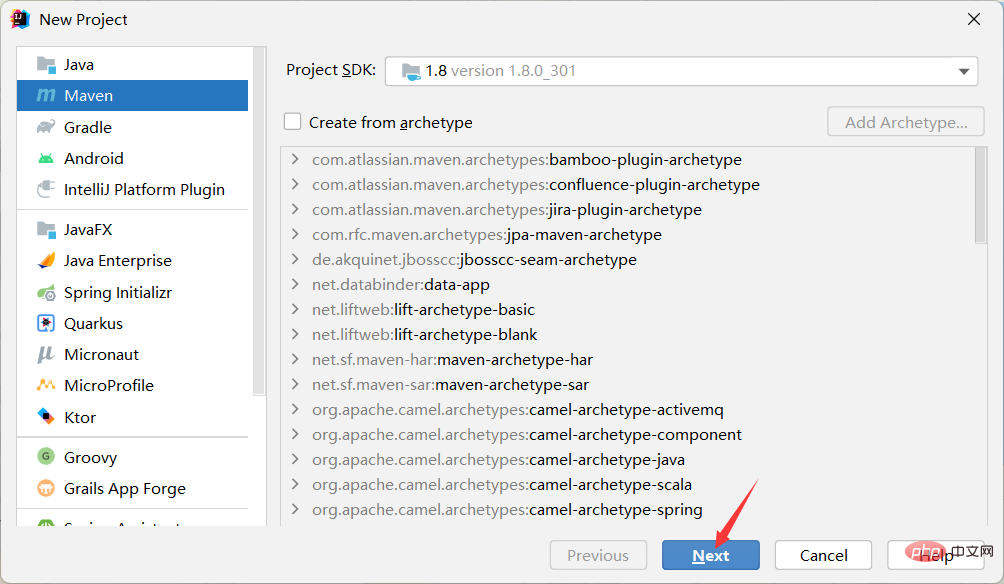1. Description
The functions of the @Component annotation are the same, but there are three annotations with different meanings:
1) @Repository: annotation on the Dao implementation class
2) @Service: Annotated on the Service implementation class
3) @Controller: Annotated on the SpringMVC processor
Bean scope:
@Scope("prototype"): Used to specify object creation Mode, can be singleton mode or prototype mode, the default is singleton
Basic type attribute injection:
@Value
@Autowired: byType annotation injection, that is, based on type annotation
@Qualifier("mySchool"): byName annotation injection, must be used in conjunction with @Autowired when using @Qualifier
Domain attribute annotation:
@Resource: Without the name attribute Annotation injection in byType mode, but the premise is that the injected object can only have one
@Resource(name="mySchool"): annotation injection in byName mode
The life of the Bean:
@PostConstruct: The current Bean has just been initialized
@PreDestroy: The current Bean is about to be destroyed
@Configuration: Indicates that the current class acts as a Spring container, that is, all beans will be created by this class
Note:
Several issues should be stated before giving an example:
1. Annotations need to depend on the spring-aop-4.3.9.RELEASE.jar package, so they need to be imported. Dependency package.

## 2. Inject using annotation, the configuration file needs to be added Constraint header file:
<?xml version="1.0" encoding="UTF-8"?><beans></beans>You can also find this header file yourself from Spring’s documentation:

package com.ietree.spring.basic.annotation.demo1;import org.springframework.beans.factory.annotation.Value;import org.springframework.stereotype.Component;
@Component("mySchool")public class School {
@Value(value = "清华大学")private String name;public School() {super();
}public School(String name) {super();this.name = name;
}public void setName(String name) {this.name = name;
}
@Overridepublic String toString() {return "School [name=" + name + "]";
}
}
Create Student class:
package com.ietree.spring.basic.annotation.demo1;import javax.annotation.PostConstruct;import javax.annotation.PreDestroy;import javax.annotation.Resource;import org.springframework.beans.factory.annotation.Autowired;import org.springframework.beans.factory.annotation.Qualifier;import org.springframework.beans.factory.annotation.Value;import org.springframework.stereotype.Component;/**
* 说明:
* 与@Component注解功能相同,但意义不同的注解还有三个:
* 1)@Repository:注解在Dao实现类上
* 2)@Service:注解在Service实现类上
* 3)@Controller:注解在SpringMVC的处理器上
*
* Bean作用域:
* @Scope("prototype"):用于指定对象创建模式,可以是单例模式或者原型模式,默认是singleton
*
* 基本类型属性注入:
* @Value
*
* @Autowired:byType方式的注解式注入,即根据类型注解
* @Qualifier("mySchool"):byName方式的注解式注入,在使用@Qualifier时必须与@Autowired联合使用
*
* 域属性注解:
* @Resource:不加name属性则为byType方式的注解式注入,但前提是注入的对象只能有一个
* @Resource(name="mySchool"):byName方式的注解式注入
*
* Bean的生命始末:
* @PostConstruct:当前Bean初始化刚完毕
* @PreDestroy:当前Bean即将被销毁 *///@Scope("prototype")@Component("myStudent")public class Student {
@Value(value = "小明")private String name;
@Value(value = "25")private int age; // @Autowired// @Qualifier("mySchool")// @Resource(name="mySchool") @Resourceprivate School school;// 对象属性,也叫做域属性public Student() {super();
} public Student(String name, int age) {super();this.name = name;this.age = age;
}public void setName(String name) {
System.out.println("执行setName()");this.name = name;
}public void setAge(int age) {
System.out.println("执行setAge()");this.age = age;
}public void setSchool(School school) {this.school = school;
}
@Overridepublic String toString() {return "Student [name=" + name + ", age=" + age + ", school=" + school + "]";
}
@PostConstructpublic void initAfter(){
System.out.println("当前Bean初始化刚完毕");
}
@PreDestroypublic void preDestroy(){
System.out.println("当前Bean即将被销毁");
}
}
Create MyJavaConfig class:
package com.ietree.spring.basic.annotation.demo1;import org.springframework.beans.factory.annotation.Autowire;import org.springframework.context.annotation.Bean;import org.springframework.context.annotation.Configuration;/**
* @Configuration:表示当前类充当Spring容器,即所有的Bean将由这个类来创建 */@Configurationpublic class MyJavaConfig {
@Bean(name="mySchool")public School mySchoolCreator(){return new School("清华大学");
} // autowire=Autowire.BY_TYPE:指从当前类这个容器中查找与域属性的类型具有is-a关系的Bean// autowire=Autowire.BY_NAME:指从当前类这个容器中查找与域属性同名的Bean@Bean(name="myStudent", autowire=Autowire.BY_TYPE)public Student myStudentCreator(){return new Student("小明", 25);
}
}
Create configuration file:
<?xml version="1.0" encoding="UTF-8"?><beans><!-- 扫描 com.ietree.spring.basic.annotation.demo1这个包及其子包 --><component-scan></component-scan><!-- 扫描 com.ietree.spring.basic这个包的子包 --><component-scan></component-scan></beans>Create test class:
package com.ietree.spring.basic.annotation.demo1;import org.junit.Test;import org.junit.runner.RunWith;import org.springframework.beans.factory.annotation.Autowired;import org.springframework.context.ApplicationContext;import org.springframework.context.support.ClassPathXmlApplicationContext;import org.springframework.test.context.ContextConfiguration;import org.springframework.test.context.junit4.SpringJUnit4ClassRunner;@RunWith(SpringJUnit4ClassRunner.class)
@ContextConfiguration(locations="classpath:com/ietree/spring/basic/annotation/demo1/applicationContext.xml")public class MyTest {
@Autowiredprivate Student student;
@Testpublic void test01() {
String resource = "com/ietree/spring/basic/annotation/demo1/applicationContext.xml";
ApplicationContext ctx = new ClassPathXmlApplicationContext(resource);
School school = (School) ctx.getBean("mySchool");
System.out.println(school);
Student student = (Student) ctx.getBean("myStudent");
System.out.println(student);
((ClassPathXmlApplicationContext)ctx).close();
} public void test02(){
System.out.println(student);
}
}
The above is the detailed content of Detailed introduction to the annotation function in java. For more information, please follow other related articles on the PHP Chinese website!
 Java Spring怎么实现定时任务May 24, 2023 pm 01:28 PM
Java Spring怎么实现定时任务May 24, 2023 pm 01:28 PMjava实现定时任务Jdk自带的库中,有两种方式可以实现定时任务,一种是Timer,另一种是ScheduledThreadPoolExecutor。Timer+TimerTask创建一个Timer就创建了一个线程,可以用来调度TimerTask任务Timer有四个构造方法,可以指定Timer线程的名字以及是否设置为为守护线程。默认名字Timer-编号,默认不是守护线程。主要有三个比较重要的方法:cancel():终止任务调度,取消当前调度的所有任务,正在运行的任务不受影响purge():从任务队
 Java axios与spring前后端分离传参规范是什么May 03, 2023 pm 09:55 PM
Java axios与spring前后端分离传参规范是什么May 03, 2023 pm 09:55 PM一、@RequestParam注解对应的axios传参方法以下面的这段Springjava代码为例,接口使用POST协议,需要接受的参数分别是tsCode、indexCols、table。针对这个Spring的HTTP接口,axios该如何传参?有几种方法?我们来一一介绍。@PostMapping("/line")publicList
 Spring Boot与Spring Cloud的区别与联系Jun 22, 2023 pm 06:25 PM
Spring Boot与Spring Cloud的区别与联系Jun 22, 2023 pm 06:25 PMSpringBoot和SpringCloud都是SpringFramework的扩展,它们可以帮助开发人员更快地构建和部署微服务应用程序,但它们各自有不同的用途和功能。SpringBoot是一个快速构建Java应用的框架,使得开发人员可以更快地创建和部署基于Spring的应用程序。它提供了一个简单、易于理解的方式来构建独立的、可执行的Spring应用
 Spring 最常用的 7 大类注解,史上最强整理!Jul 26, 2023 pm 04:38 PM
Spring 最常用的 7 大类注解,史上最强整理!Jul 26, 2023 pm 04:38 PM随着技术的更新迭代,Java5.0开始支持注解。而作为java中的领军框架spring,自从更新了2.5版本之后也开始慢慢舍弃xml配置,更多使用注解来控制spring框架。
 Java Spring框架创建项目与Bean的存储与读取实例分析May 12, 2023 am 08:40 AM
Java Spring框架创建项目与Bean的存储与读取实例分析May 12, 2023 am 08:40 AM1.Spring项目的创建1.1创建Maven项目第一步,创建Maven项目,Spring也是基于Maven的。1.2添加spring依赖第二步,在Maven项目中添加Spring的支持(spring-context,spring-beans)在pom.xml文件添加依赖项。org.springframeworkspring-context5.2.3.RELEASEorg.springframeworkspring-beans5.2.3.RELEASE刷新等待加载完成。1.3创建启动类第三步,创
 从零开始学Spring CloudJun 22, 2023 am 08:11 AM
从零开始学Spring CloudJun 22, 2023 am 08:11 AM作为一名Java开发者,学习和使用Spring框架已经是一项必不可少的技能。而随着云计算和微服务的盛行,学习和使用SpringCloud成为了另一个必须要掌握的技能。SpringCloud是一个基于SpringBoot的用于快速构建分布式系统的开发工具集。它为开发者提供了一系列的组件,包括服务注册与发现、配置中心、负载均衡和断路器等,使得开发者在构建微
 Java Spring Bean生命周期管理的示例分析Apr 18, 2023 am 09:13 AM
Java Spring Bean生命周期管理的示例分析Apr 18, 2023 am 09:13 AMSpringBean的生命周期管理一、SpringBean的生命周期通过以下方式来指定Bean的初始化和销毁方法,当Bean为单例时,Bean归Spring容器管理,Spring容器关闭,就会调用Bean的销毁方法当Bean为多例时,Bean不归Spring容器管理,Spring容器关闭,不会调用Bean的销毁方法二、通过@Bean的参数(initMethod,destroyMethod)指定Bean的初始化和销毁方法1、项目结构2、PersonpublicclassPerson{publicP
 spring设计模式有哪些Dec 29, 2023 pm 03:42 PM
spring设计模式有哪些Dec 29, 2023 pm 03:42 PMspring设计模式有:1、依赖注入和控制反转;2、工厂模式;3、模板模式;4、观察者模式;5、装饰者模式;6、单例模式;7、策略模式和适配器模式等。详细介绍:1、依赖注入和控制反转: 这两个设计模式是Spring框架的核心。通过依赖注入,Spring负责管理和注入组件之间的依赖关系,降低了组件之间的耦合度。控制反转则是指将对象的创建和依赖关系的管理交给Spring容器等等。


Hot AI Tools

Undresser.AI Undress
AI-powered app for creating realistic nude photos

AI Clothes Remover
Online AI tool for removing clothes from photos.

Undress AI Tool
Undress images for free

Clothoff.io
AI clothes remover

AI Hentai Generator
Generate AI Hentai for free.

Hot Article

Hot Tools

Safe Exam Browser
Safe Exam Browser is a secure browser environment for taking online exams securely. This software turns any computer into a secure workstation. It controls access to any utility and prevents students from using unauthorized resources.

PhpStorm Mac version
The latest (2018.2.1) professional PHP integrated development tool

MinGW - Minimalist GNU for Windows
This project is in the process of being migrated to osdn.net/projects/mingw, you can continue to follow us there. MinGW: A native Windows port of the GNU Compiler Collection (GCC), freely distributable import libraries and header files for building native Windows applications; includes extensions to the MSVC runtime to support C99 functionality. All MinGW software can run on 64-bit Windows platforms.

WebStorm Mac version
Useful JavaScript development tools

mPDF
mPDF is a PHP library that can generate PDF files from UTF-8 encoded HTML. The original author, Ian Back, wrote mPDF to output PDF files "on the fly" from his website and handle different languages. It is slower than original scripts like HTML2FPDF and produces larger files when using Unicode fonts, but supports CSS styles etc. and has a lot of enhancements. Supports almost all languages, including RTL (Arabic and Hebrew) and CJK (Chinese, Japanese and Korean). Supports nested block-level elements (such as P, DIV),







